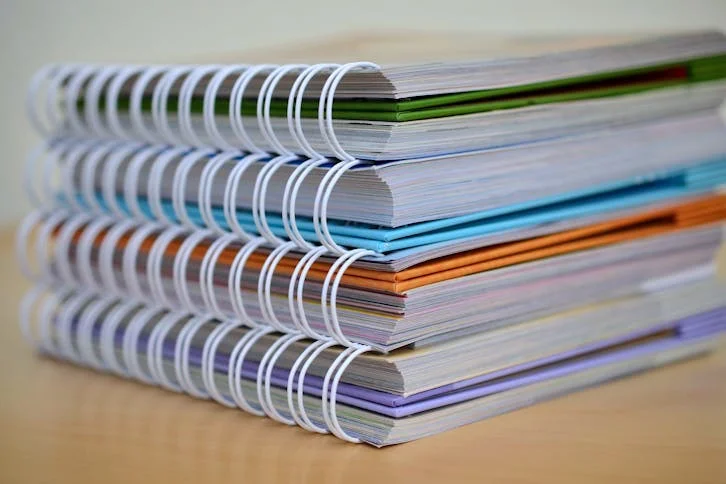
Process analysis essay: how to write and improve
If you’re wondering about writing a process essay, it's time to figure it out. There are many things we don't understand how to do. However, in these essays, the authors break it down and explain it in detail so the reader can repeat it independently.
Let's imagine that you want to cook a specific dish. What do you do? You go to the Internet for a recipe and follow the instructions. The process analysis essay provides such an explanation but for more complex processes, such as how a mechanism works or how to make a laboratory. However, the simple ones are not going away either. Think back to the last time you searched for something like this on Google, and it probably came up with a WikiHow for every case.
The importance is evident: people learn something new and can repeat it. So, let's learn how to write a helpful text. Let's discuss the meaning, features, process analysis essay structure, and most common mistakes. We also provide a qualitative analysis essay example.
All about process analysis essays
What is a process analysis essay? So, this type of essay describes performing a specific action or procedure. The main goal is to explain the steps so that the reader can easily understand and repeat them. If you want a successful text, don't forget about the following elements:
- Description of the process. Each step is concisely explained, and the reader quickly perceives the information.
- Logical sequence. Follow the chronology or importance.
- Specific examples. A successful process analysis contains illustrations. These can be photos, charts, diagrams, or simple real-life examples. Sometimes, it is appropriate to add video or audio so that users can choose a convenient format.
- A clear explanation. Avoid complex terms and obscure expressions.
Of course, there are different ways of writing a process essay. Here are the main ones:
- How-to: Describes the steps to perform a particular action or create something specific.
- How-it-works: Explains how a particular process, mechanism, or device works. Physics students will likely encounter this type both as readers and authors.
- How-to-change: Describes the steps needed to change a situation, process, or condition.
- How-to-choose: This one describes the steps involved in deciding or choosing between alternatives. In addition to the description, there’s a lot of analysis about the advantages of both options, which requires statistics.
You can create a successful and clear process analysis essay about anything using these simple principles and types.
Thorough preparation for writing
How to write a process analysis essay? The first step is to choose a topic. Pick a process you’re interested in or an expert in. This is not a narrative essay where you can turn a blind eye to expertise. Think about what you are familiar with from personal experience. For example, how to make fresh juice, choosing the best way to learn English or the process of creating a decorative item. The main thing is that you can describe it in detail.
Next, create a thesis statement. Avoid unclear wording; the reader should understand what to expect. Support this thesis throughout the text.
Then, it's time for research, which is indispensable whether you are writing a scientific paper or a process analysis essay. In our opinion, this is the most exciting part; you will learn something new yourself. Study literature, watch videos, read articles, or even talk to experts in the field. You're looking for information to help you better understand the process and give you experienced advice. Check out the best sources in the table below.
| Type of source | Description |
| Books | Books are excellent sources of information for your process analysis essay as they typically provide detailed instructions on how to perform certain actions. "How-to" books specializing in specific skills or processes often contain step-by-step sequences and practical advice for their execution. Scientific books can also provide a deeper understanding from a theoretical and research perspective. For example, "The Joy of Cooking" is used for culinary processes, and "How to Win Friends and Influence People" is used for social interactions. |
| Internet resources | Internet resources such as Wikipedia, WikiHow, eHow, and Instructables are your best friends now. They usually contain detailed steps for completing various simple and complex tasks. They also have illustrations, videos, and other materials that aid in understanding the process. |
| Video tutorials | YouTube, Vimeo, and Khan Academy can help visualize the process of performing actions. These videos provide the opportunity to see the process, which can help determine the sequence of steps and address potential difficulties. |
| Scholarly articles | PubMed, Google Scholar, JSTOR, and other academic databases provide a deeper understanding. These articles often include research, expert conclusions, and statistics that support analysis. Plus, you'll find some process analysis essay topics for inspiration. |
| Expert consultations | Who knows more than an expert in a particular field? You don't even have to look far - it could be your colleague or professor. Just ask them; they are usually happy to share their knowledge. |
When you have a lot of information, create an analysis essay outline. First, identify the main steps of the process you will describe. Then, choose the order. You should also note possible illustrations or examples in the analysis essay outline; just figure out where they would look appropriate.
Keep your audience in mind. During process analysis essay writing, it is important to imagine that your reader is a person who may be completely inexperienced in the field.
So, at this stage, choose a topic, research, sketch out ideas, and take the reader's position. The better prepared you are, the easier it will be for you to write an interesting and understandable process analysis essay.
Writing a process analysis essay by structure
Now we know the answer to “What is a process analysis essay?”. It's time to dance through a certain process. Let's do it step by step, sticking to the right analysis essay structure:-
Introduction:
- Hook. Engage your audience to make them want to read more.
- Background information. Here, we tell a little backstory: "Each of us has tried to make pizza at home at least once in our lives.”
- Thesis statement. Now, say they’ll learn how to do it and call for action.
-
Body:
- Detailed description. Imagine that you’re doing it right now. This part should be the largest, i.e., the main one.
- Details and descriptions. If necessary, describe what is needed to complete each step. Put yourself in the reader's shoes: What would you like to know? This can be a simple list or just a mention of the item when describing the steps (e.g., take a blender).
- Transitional phrases. Use "First," "After that," "Finally," etc. to show a sequence of events, but don't overuse them. Also, depending on the process described, there may be some tangents to the topic.
- Tips and warnings. Inform readers about possible problems at each stage and how to overcome them.
-
Analysis:
- Explanation of steps. Unlike before, when we explained how to do something, we can now analyze the complex parts in more detail and delve deeper into the essence.
- Implications or results. Explain what should happen at the end of each step. For example, "After you roll out the dough, it should be thin and even."
- Variations. Mention different ways to achieve the same result. Give readers a choice. But there should be only one detailed description.
-
Conclusion:
- Summary of the process. Remind your readers what they learned, and summarize all the steps if necessary.
- Restate the thesis. State the main topic again, showing that you have covered it.
- Final thoughts. Say something like, "Now that you know how to make a pizza, you can experiment with different ingredients and cooking methods." Make your process analysis essay conclusion memorable.
The main goal is to make the process understandable and exciting for the reader. As with other types of essays, we do this through an introduction, body of text, and conclusion. Check out some writing tips for process analysis essays to learn more.
What mistakes should you avoid in process analysis essays?
Often, people can't decide what to describe and jump from one topic to another throughout the text. Or they neglect clarity, so readers can't get the point at all. Before you start writing a process essay, clearly define the topic. Then, what should the reader take away from the text, and what knowledge should be gained?
The next mistake is ignoring potential risks or challenges. That is, you write as if the process will go smoothly and without problems. This is rarely the case, especially if it’s the first time a person performs this action. So, you describe each step in detail to minimize these risks. However, it’s even better to pay attention to them and write a procedure for action if trouble does occur. Look at a good analysis essay example and learn from it.
Let's finish with the lack of evidence to support the claims. For example, you haven't done this process and are writing theoretically. The reader will find some inconsistency and uncertainty. If it's a complex process (such as a chemical experiment), you can't do it without numbers, statistics, results, etc. That's one of the process analysis essay guidelines.
Here are a few other mistakes that also significantly degrade the quality of writing a process essay:
- Poor grammar. When you ignore the correct use of words, spelling and sentences become unclear. This worsens the perception of the text. And how can you understand a process if you can't even understand its description? Be careful and take your time. Additional tools like Grammarly or LanguageTool should also be used.
- Reread the text instantly. Let the process analysis essay sit for a while. At least a day is best, but even a few hours is better than nothing. Rereading immediately after writing occurs from memory, and the eye does not notice even obvious mistakes. Another good practice is to read the text aloud or ask someone to do so. You’ll immediately notice overly complex structures that should be eliminated.
- Change the topic of the essay. If you run from topic to topic in the middle of the text, the reader will get lost. Each paragraph should support the main subject and idea of your essay. Following the analysis essay structure helps a lot with this.
Avoid this and stick to the process analysis essay format. It is useful to look at similar works by other authors and critically analyze them as if you were an editor. Then, it will be easier to evaluate your own work.
FAQ
How long should a process analysis essay be?
The length of a process analysis essay should be sufficient to adequately describe and address key aspects, usually 1000-1500 words. If it is a university paper, the professors themselves set the limits.
How do I choose a topic for a process analysis essay?
Draw on personal interest, current issues, or process essay topics that have already been researched. You have to be interested; otherwise, you’re not motivated, and readers will notice.
Should I address potential risks in my process analysis essay?
Yes, it helps to understand the possible negative consequences and ways to avoid them. Devote at least a paragraph to such situations. The more useful information, the better.
How can I make my process analysis essay more engaging?
Use process analysis essay examples and illustrations, and provide practical situations or success stories. This will help the reader understand the topic better and become more interested in it. Also, write simply, as if you were explaining the process to a friend. No one likes complicated structures and too many fancy words.
Bottom line
So, what have we learned? A process analysis essay is extremely important and occurs in everyday life. You can't do without it if you want to learn something new or solve a problem (the same leaky faucet). And if you are a student, this is your task for the coming years.
To write a quality process analysis essay, you must choose a topic, weighing all the pros and cons. It should be interesting to you but also relevant to the potential audience. Above, we have described how to think about it and decide on the best process. Then, plan and follow the classic introduction-body-conclusion scheme. The process analysis essay introduction makes the readers interested, and the end provides the answer.
Practice makes perfect, so write as much as you can. Ask your friends for feedback on your first texts, or even better, ask your teacher, or get some writing help online. As we mentioned above, they can also become experts on your next materials. Now that you know all about writing a process essay, don't miss the deadline. Start now.




Comments (0)
Thank you for your comment! 🌟
It has been submitted and is awaiting moderation. Stay tuned—it will be visible soon!